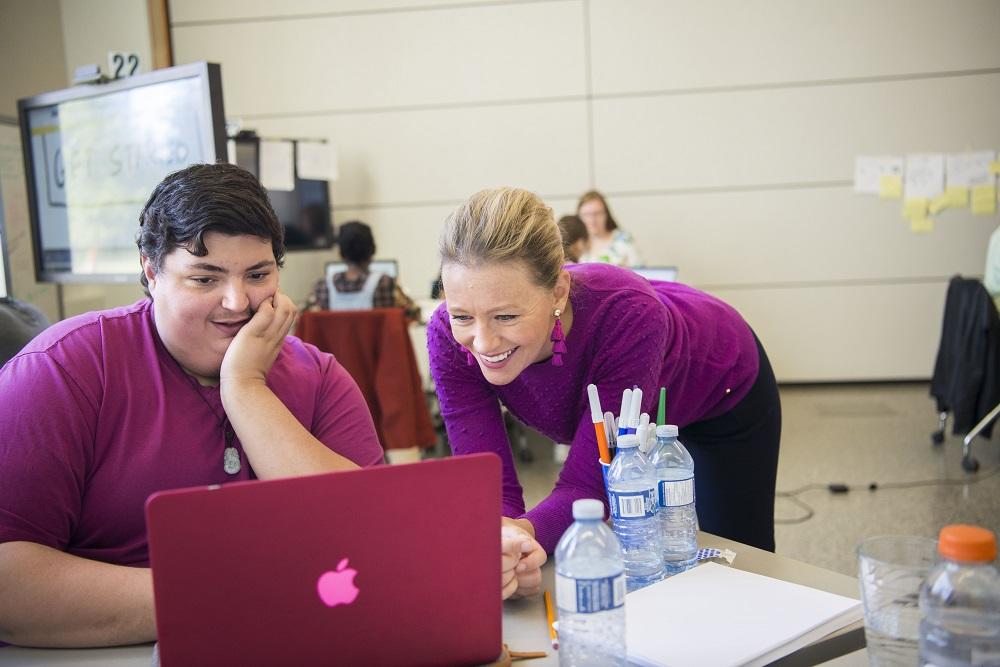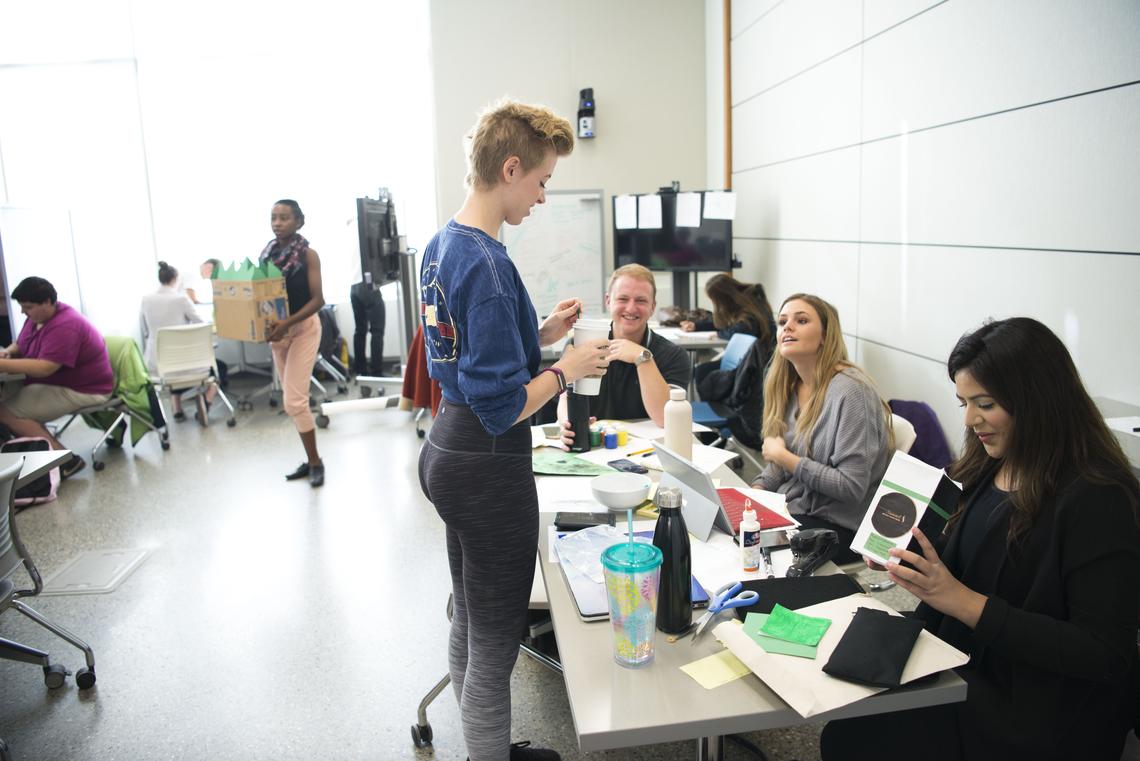Sept. 19, 2018
Solving global challenges by design: Students learn to ask probing questions

How can we use design thinking to change the world? This was the question — and challenge — facing the students enrolled in Dr. AnneMarie Dorland’s Leading through Design Practice course. Conducted throughout the last week of August, Leading through Design Practice called students to address the lofty topic of how to feed nine billion people by the year 2050. Its theme was built off an introductory course in the Global Challenges series, which runs through the College of Discovery, Creativity and Innovation in the Taylor Institute for Teaching and Learning.
Dr. Dorland’s class was tasked specifically with taking on design challenges or creative missions, engaging in experiments with radical intent: to move the needle locally on feeding a growing population in a sustainable manner. Some of the course's direct iterations of this challenge focused on reducing global meat consumption and reimagining the hotel buffet experience as a strategy for reducing food waste. To involve her students directly in these topics, Dorland used a classroom strategy of focusing heavily on design thinking.
What exactly, then, does design thinking mean?
Dorland, PhD, explains: “Design thinking is a term that gets thrown around a lot these days. To me, designing is changing something from an existing state to a preferable one — this goes for product design, experience design, service design — it’s the deliberate creation of change for the better. Design thinking is the term we use for the mental shortcuts, practices and habits designers use to create this change quickly, repeatedly and reliably in a creative way. It isn’t a recipe for good design, it’s a recipe for thinking about real-life problems in a new way.”

AnneMarie Dorland describes design thinking as the term for mental shortcuts that designers use.
Solving global problems step-by-step
This course brought the students into design thinking through a step-by-step process, leading them in small teams through the problem-solving stages of problem definition, empathy, ideation, prototyping and user testing.
Megan Koevoet, a second-year student in the School of Languages, Linguistics, Literatures and Cultures, joined her groupmates in tackling the challenge of helping small farms grow.
She reflects on the importance of problem definition as a first stage in design thinking. “You have to really focus on what the problem is, if it’s even a problem in the first place, and you have to be able to identify what the problem means,” she notes. “So, if we’re looking at how to help small farms grow, how are we helping them grow? Are they growing in crop yield? Are they growing in size? So you’ve really got to hone in on what the question is and ask as many questions as you can, but without seeking the answers, so that you can figure out what path you want to take when you eventually move onto ideation and trying to solve the problem.”
The course’s “empathy” step required the students to go out and engage in some form of field work, which Dr. Dorland allowed them to plan and conduct themselves. Koevoet went with her groupmates to visit and conduct an interview with a small local farmer, an experience she says was the highlight of her entire week.
Fatima Haider, a third-year student in the Department of Political Science, enjoyed the prototyping stage and the opportunities it presented for reflecting on and developing leadership skills.
“I liked prototyping and actually seeing your innovation come through,” she says. “Because of the structure of the class — it’s smaller and it’s a more connected environment — you improve and learn a lot of leadership skills, because you break into even smaller groups. And so you see yourself talk and conduct people and that helps you improve those kinds of skills.”
Looking back on the demanding and high-energy week that comprised Leading through Design Practice, Dorland thinks the course’s lightning-quick timeframe helped her students learn. “It isn’t easy to work that intensively and that quickly for five days straight, but I know from researching designers who do this work daily that creativity and discovery can be ignited by tight constraints,” she says.

The students in Leading through Design Practice used design thinking in a step-by-step process.
Thinking about global challenges leads to lasting change
For Koevoet, the process of change also occurred on a personal level. “I’ve said it before, and it sounds really corny, but the whole thing is a life-changer,” she enthuses. “It definitely changes your perspective, but in a good way, in a very sensitive and empathetic way, because you’re looking at the world differently and you’re seeing this global challenge in everyday life. So it’s really cool that I got the opportunity to take this class, to take all three of the Global Challenges classes so far. I really love it.”
This is precisely the kind of impact that Dorland seeks. She says, “After taking UNIV 401, I hope students have a new tool kit to use in tackling social innovation. The students of the Global Challenges program are change-makers: they are equipping themselves with the tools and learning that they will need to create real change in the world.”
Read more about Global Challenges.
Read more about the College of Discovery, Creativity and Innovation.
